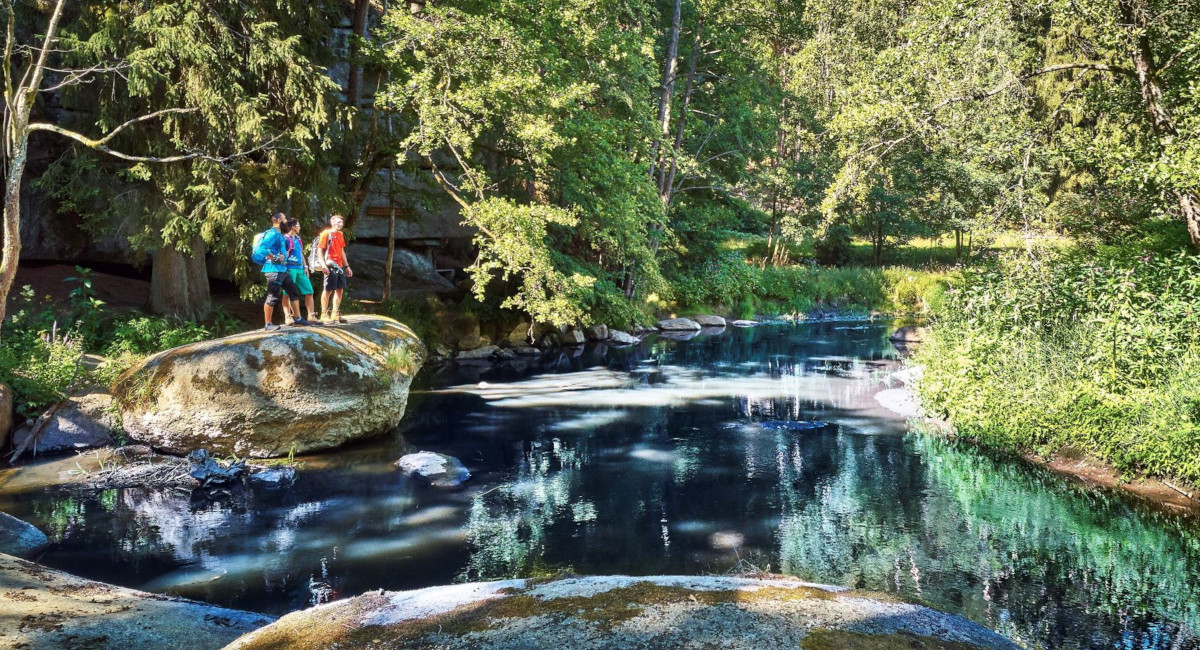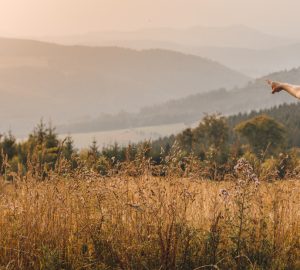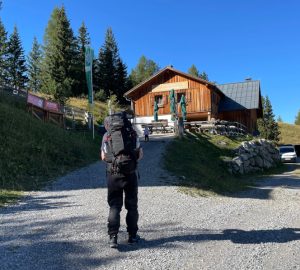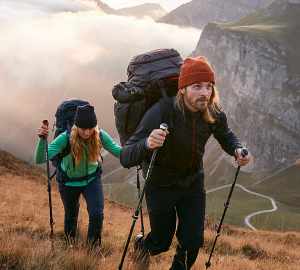Hiking on the Goldsteig is definitely an experience: 660 kilometers of excellently developed hiking trails lead through the largest contiguous forest mountain range in Central Europe and take you from Marktredwitz in the Fichtel Mountains through a national park and five nature parks to Passau. If you wish, you can also switch to the Czech parallel trail at many points. With a total of three different routes, there is the right level of difficulty for all hiking enthusiasts.
The entire route of the Goldsteig covers about 2,000 kilometers – more than any other long-distance hiking trail in Germany. You have the possibility to conquer the entire long-distance hiking trail in about 23 daily stages or you can choose a section according to your taste. Circular routes are also possible, where you can switch back and forth between Bavaria and the Czech Republic again and again and experience real wilderness.
Long-distance hiking trail with distinction
The Goldsteig has been Germany’s longest certified quality hiking trail since 2007. In addition to the quality of the trail and its natural attractiveness, the cultural sights and the hiking guidance system have also received awards. This makes for a wonderful hiking experience where you can enjoy the nature around you to the fullest.
It is not for nothing that the Goldsteig has been included in the ranks of the “Top Trails of Germany” and thus belongs to the best and most beautiful long-distance hiking trails in Germany.
Route of the Goldsteig
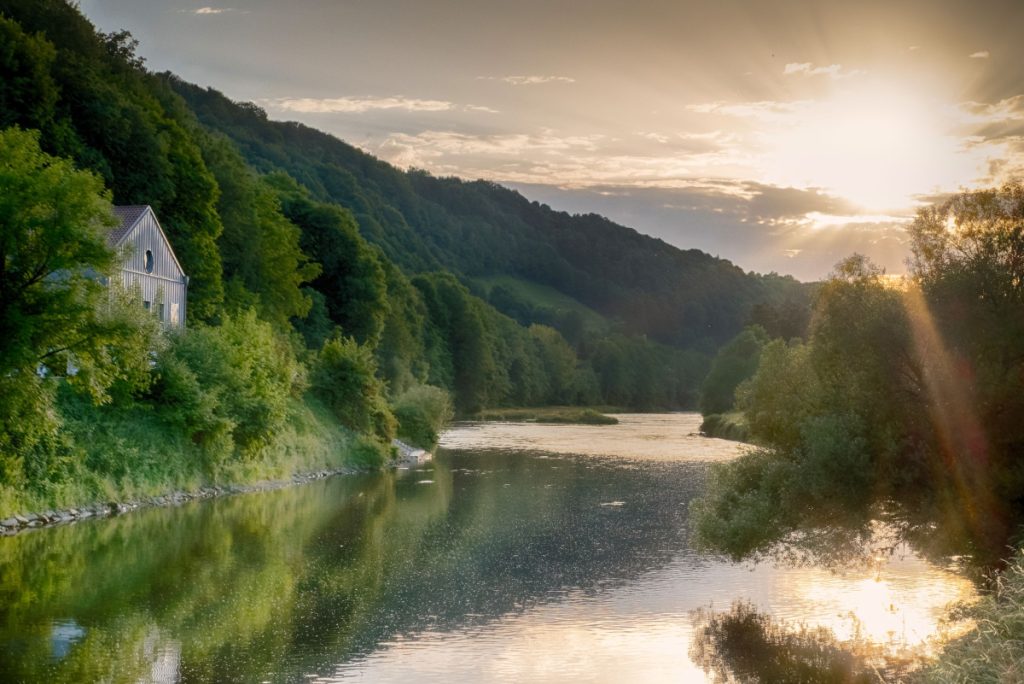
The Goldsteig trail starts in Marktredwitz in the Fichtelgebirge mountains. From there it runs through the Upper Palatinate Forest and the Bavarian Forest to its destination Passau. Shortly after Thanstein, the long-distance trail divides into the more demanding northern route (291 km), which leads over the peaks of the Bavarian Forest, and the flatter and thus somewhat easier southern variant (253 km). Shortly before the destination Passau, the two routes meet again.
In addition, there is also the Goldsteig parallel route on the Czech side of the border.
Planning the route is very easy thanks to a wide range of free maps and online route planners. You can find everything you need to know about each stage online.
Along the way, there are numerous hosts who offer accommodation and meals as well as packed lunches and a luggage service. Camping sites are also available.
We would like to briefly introduce the three different options for your route on the Goldsteig here:
Variant #1: The southern route
If you decide to take the southern route, a colorful alternation of shady forest paths and fresh meadow paths awaits you. Again and again you can enjoy magnificent views: On clear days, the Alpine range from the Dachstein to the Zugspitze can be seen on the horizon.
On 15 stages, which are always connected with slight ascents and descents, you hike through the nature reserve “Hölle” and the rock park near Falkenstein until you reach the sunny, lush green mixed forests of the Bavarian Forest. The route is especially recommended in spring, as the vegetation is always a few weeks earlier than elsewhere thanks to climatically favorable conditions. The southern variant of the Goldsteig then leads to the mountain slopes of the Brotjacklriegel along the “Black Pearl” Ilz to Passau.n long-distance hiking trails in Germany.
Variant #2: The North Route
If you prefer a somewhat more challenging route, it is best to choose the northern route. It leads over the 1000m peaks in the Bavarian Forest.
First you go past Thanstein, over the Steinerne Wand to Rötz. Then you hike past Waldmünchen and Furth im Wald until you reach the Bavarian-Bohemian borderland. Now you are under the “Green Roof of Europe”, the largest contiguous low mountain range in Europe between the Atlantic and the Urals. Picturesque towns, culture and the almost untouched nature of the Bavarian Forest National Park alternate.
Next, you’ll head up to the thousands: Hohenbogen, Kaitersberg, Großer Arber, Falkenstein, Rachel, Lusen and Dreisessel. This is definitely a highlight of the tour! Especially the two geotopes “Blockmeer am Lusen” as well as the bizarre granite rocks at the Dreisessel will remain in your memory.
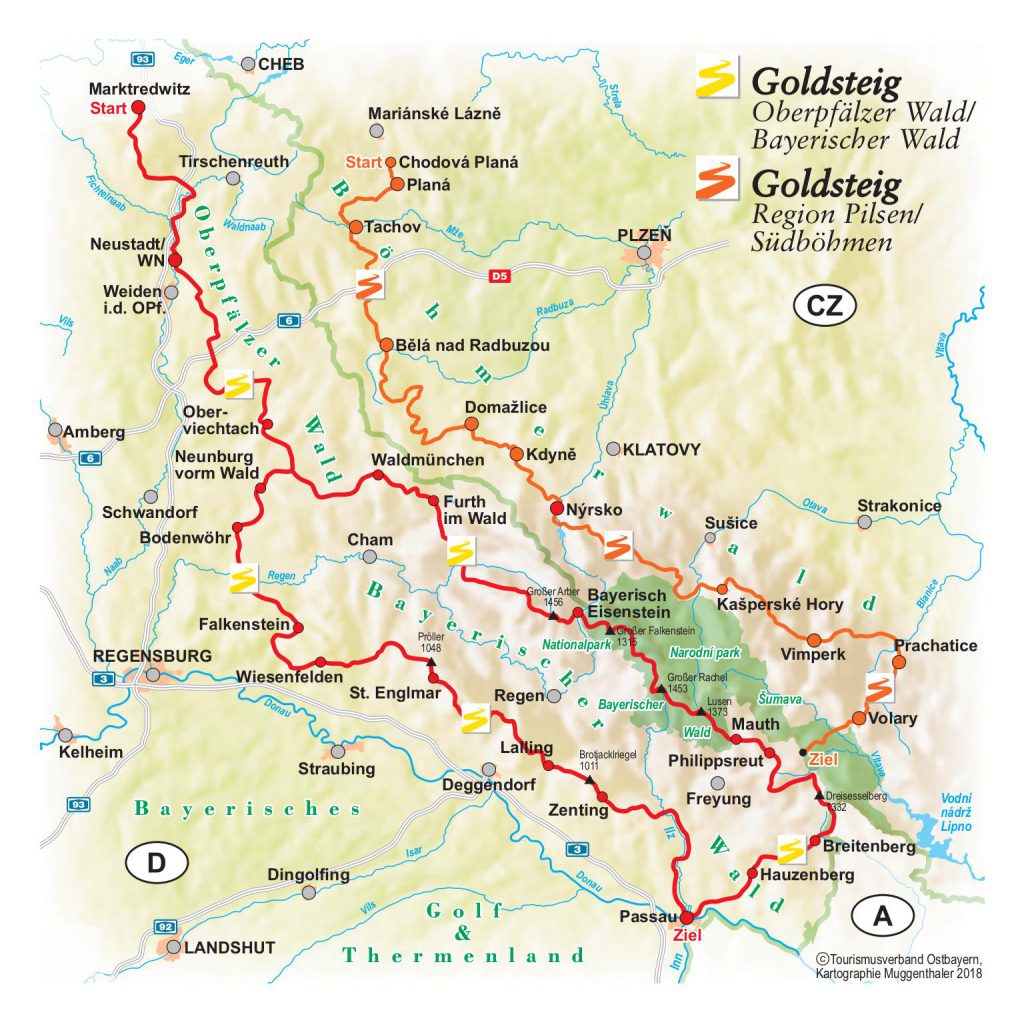
A little further south you finally reach the border triangle, the landscape opens up and gives you a view of the Danube valley and the Mühlviertel. Now it’s not far to your destination Passau.
Variant #3: The Goldsteig in the Czech Republic
Pretty much parallel to the German variant of the Goldsteig runs the Zlatá Stezka on the Czech side of the border. It runs from Chodová Planá in the Pilsen region to the Marchhäuser/ České Žleby border crossing in southern Bohemia, where the trail rejoins the northern route of the German Goldsteig.
The route covers 289 kilometers and is marked by an orange “S”. Most interesting is the possibility to change from the German Goldsteig to the Czech Bruderweg. This is possible at 13 border crossings and is very easy thanks to the best signposting. Including all cross connections and feeder trails, the hiking network of the Goldsteig covers a total of 2,000 kilometers.
There is also a lot to experience on the Goldsteig in the Czech Republic: The trail leads directly into the Šumava National Park. First, you pass the ruins of Hus and Libínské sedlo castles and the Libín lookout tower with a view you shouldn’t miss, until you reach Prachatice – the “Renaissance Pearl of South Bohemia”. The museum there is definitely worth a visit and gives insight into the history of the Gold Trail and the historical salt trade.
Continuing west, you will pass some beautiful towns and the highest castle in Bohemia, Kašperk Castle, and enter the Pilsen region. In Pilsen you will gradually leave the National Park and enter the Bohemian Forest. Kdyně is the next important stop on the way, from where the trail leads to Domažlice – into the heart of the peculiar and charming Chodsko Region. Tradition and customs of the Chods are presented here in the Museum of the Chodland and the Chod Castle with its lookout tower offers a magnificent view.
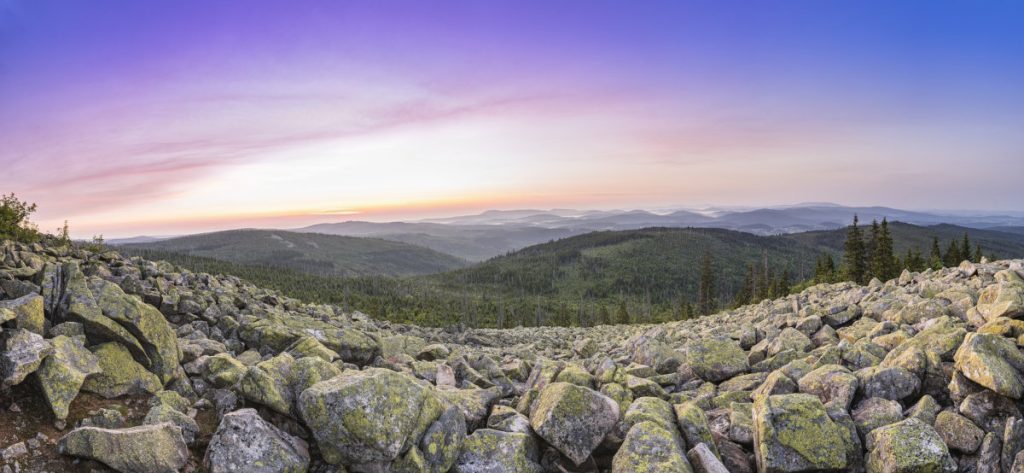
From Domažlice, the trail then winds up towards Klenčí pod Čerchovem, climbs to the rock Sádkova skála and then leads steeply downhill via Postřekov to Poběžovice.
The following stretch to Bělá nad Radbuzou surprises with numerous sights, before in Přimda a steeply rising guard castle welcomes the hiker from afar. The trail continues through the diverse landscape of the Šumava via Staré Sedliště to Tachov. The last Czech Goldsteig section then leads to Chodová Planá, where the route rejoins the German part of the Goldsteig.
History of the Goldsteig – long-distance hiking on old trade routes.
The Goldsteig has a long history that goes back to the 13th century. At that time, part of the route was the most important trade connection between Bohemia and the west of the empire under Emperor Charles IV. In addition to salt – the “white gold” of his time – real gold was also transported along the route. Even old border and smuggling trails were incorporated into the network of routes. Accordingly, many legends and robber stories entwine around the Goldsteig, such as that of the robber Heigl, the Robin Hood of Bavaria, who hid in a cave below the Kreuzfelsen and robbed rich farmers and clergymen from there. You will pass the Räuber-Heigl-Höhle on one of the stages of the Goldsteig.
If you study the history of the area before you start your long-distance hike, you can discover even more evidence of these bygone days. There are several traces of gold mining in the past: The Goldberg with its ancient mining tunnels near Goldkronach invites you to an adventure tour or you visit the Goldlehrpfad near Oberviechtach while you are on the Goldsteig. In some places you can even try your hand at panning for gold yourself – great fun, especially for families.




